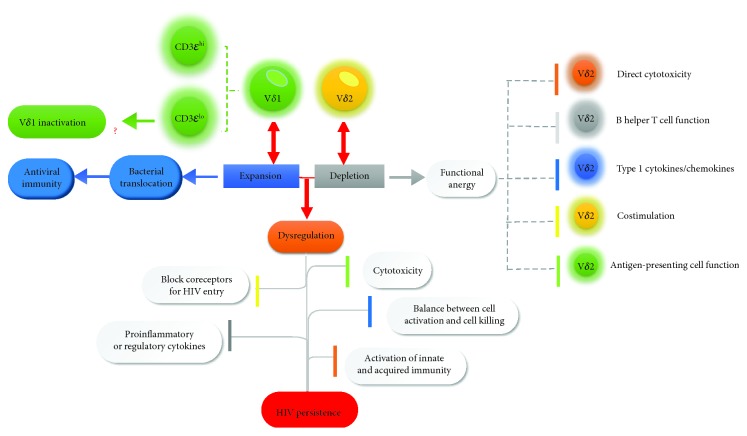Figure 2.
Dysregulation of γδ T cells during human immunodeficiency virus (HIV) infection. Expansion of Vδ1 T cells during HIV infections was associated with microbial translocation which has relevance to immune activation and exhibited its antiviral immune response. Recently, Vδ1 T cells are segmented into two subsets: CD3εlo Vδ1 T cells and CD3εhi Vδ1 T cells, and CD3εlo Vδ1 T cells may at least partially induce Vδ1 T cell inactivation based on its lower responsiveness to antigenic stimulation. However, the number and function of Vδ2 T cells are depleted during HIV infection. Depletion of Vδ2 T cells leads to inefficient immune response to HIV with inhibited direct cytotoxicity, B helper T cell function, type 1 cytokine or chemokine secretion, antigen-presenting cell function, and costimulation of NK cells. The lopsided proportion of Vδ1 and Vδ2 T cells causes a negative response against HIV infection with inhibited cytotoxicity, coreceptor for HIV entry, proinflammatory or regulatory cytokine release, activation of innate and acquired immunity, and imbalance between cell activation and killing. Thus, dysfunction of γδ T cells leads to HIV immune evasion and finally causes chronic infection.

